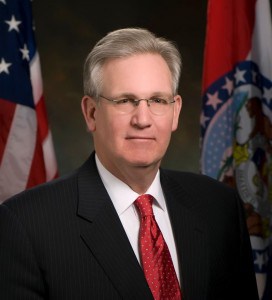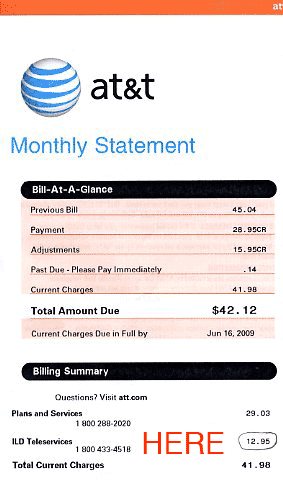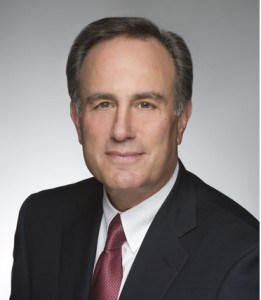 In what some believe may be the beginning of the end of the U.S. Postal Service, the plan to eliminate Saturday mail delivery this week was formally introduced to the Postal Regulatory Commission, an important step on the journey to sever home delivery to homes and businesses over the weekend.
In what some believe may be the beginning of the end of the U.S. Postal Service, the plan to eliminate Saturday mail delivery this week was formally introduced to the Postal Regulatory Commission, an important step on the journey to sever home delivery to homes and businesses over the weekend.
In what the Commission called one of the most significant changes the Postal Service has ever presented to them for review, the proposal to sack Saturday mail seeks to take a bite out of a deficit the post office claims will reach $238 billion in ten years.
As more Americans move to broadband for online banking and bill paying, e-mail, and online commerce, mail volume continues to decline. The recession isn’t helping either, as increasing postal rates challenge the torrent of profitable junk mail that reaches every American home.
But one decidedly-digital company is cringing at the thought of losing Saturday mail delivery — Netflix, the DVD-rent-by-mail firm whose sea of red envelopes moving to and from post offices around the country is a bright spot for a postal service under financial siege. This single company expects to spend $600 million in postage this year alone.
The prospect of Netflix customers facing several days in a row with nothing new to watch horrifies those who’ve become accustomed to Saturday DVD delivery.
Netflix has tried to move towards video streaming movies and television shows over broadband connections. Last week Netflix began offering Nintendo Wii owners the opportunity to stream the company’s on-demand library directly through the video game console, joining the PS3.
<
p style=”text-align: center;”>
But Slate reports on-demand streaming at the prices studios are demanding means it will be a very long time before Netflix’s 100,000 title library is available for instant viewing:
While instantly streamed movies obviously eliminate postage costs, they are not a cost-free proposition for Netflix. Analysts suggest that the streaming technology itself is very cheap—it costs roughly five cents to stream 90 minutes of content—but the licensing fees can be exorbitant. Netflix won’t release the data on how much it pays for online licensing, but can apparently be quite expensive. Dan Rayburn, an analyst with Streaming Media, has said that he’s seen some streaming movies that cost as much as $4 per play.
The other potential skunk at the garden party is your Internet Service Provider, should they implement Internet Overcharging schemes like usage caps or usage-based billing. That five cent price tag for 90 minutes of content Netflix pays would be considerably higher from ISPs seeking to charge thousands of percent markup for bandwidth.
America’s social commentators are concerned five day delivery is the beginning of the end for an institution that reaches every American.
CNN contributor Bob Greene notes no business has ever gotten ahead in the long term by reducing service to customers even as they continue to increase prices:
If mail delivery goes from six days to five, more and more Americans may decide they just don’t need it. People have available to them, as none of us needs to be reminded, computers with e-mail capability. You can correspond with friends and family and business associates; you can pay bills; you can send greetings.
Using the U.S. mail already means accepting that letters will be held up for a day between Fridays and Mondays. Elimination of Saturday mail would extend the bottleneck. And this is a country that increasingly demands speed; you’d think that someone, if only in an effort not to fall further behind, would be suggesting a seventh day of delivery be added.
Last year, the volume of U.S. mail fell by 26 billion pieces — from 203 billion to 177 billion.
The Postal Service, in gambling that doing away with a day of delivery will help heal its financial wounds, may be risking a lot.
There’s not much of a track record in American business for cutting back on services and then seeing the long-term bottom line grow. Companies that boldly announce they are going to cut their way to prosperity often cut their way to death.
If delivery is reduced to five days, and the number of letters mailed each year plunges further, the Postal Service could find itself in the position of having to eliminate even more services. Five days could conceivably go to four, or three; and if that didn’t stop the plummet in available funds, what would be the next step?
The letter carriers’ union isn’t happy about it either. They’re convinced the post office’s plan will never survive Congressional oversight, and that in the end Saturday delivery will survive.
“We don’t see this thing — despite the hoopla that the postal service management has come up with — being approved by Congress,” said Drew Von Bergen, chief spokesman for the union that represents about 200,000 mail carriers, and 100,000 retirees.
Von Bergen told a reporter for KCRG-TV the mail carriers union sees the proposal as an overreaction to the dramatic decline in mail volumes that has resulted from a deep recession. If the postal service cuts Saturday delivery now, it will accelerate the demise of the postal service as other delivery services take up the slack, and Americans become disaffected with mail delays.
“It’s not just delivery,” Von Bergen said. “It’s delivery and collection. You’re talking about a two-day stoppage of mail movement in this country: Prescriptions, DVDs, packages people ordered by mail.”
On holiday weekends, the mail would stop for three days, Von Bergen added.
The unions are convinced the source of the nightmarish budget deficits comes from one thing: health care funding for retirees. The recent health care reform legislation passed by President Obama does almost nothing to address the relentless immediate increases in health care costs which the Post Office must pre-fund in a type of escrow account. If the government eliminated the pre-funding requirement, the U.S. Post Office would have finished 2009 with a cumulative surplus of $3.7 billion over its last three fiscal years according to American Postal Workers Union President William Burrus.
[flv width=”480″ height=”380″]http://www.phillipdampier.com/video/KESQ Palm Springs Post Office Moves Closer to Ending Saturday Delivery 3-29-10.flv[/flv]
KESQ-TV in Palm Springs, California pondered the loss of Saturday mail delivery with area residents and mail carriers in this report that aired Monday evening. (3 minutes)


 Subscribe
Subscribe








